
On 22-23 November 2016, Center for Eurasian Studies (AVİM) consultant Ambassador (R) Çınar Aldemir attended the 2016 Session of the United Nations Special Programme for the Economies of Central Asia (SPECA) Economic Forum held in Ganja, Azerbaijan. Below is a detailed report on the discussions during the 2016 SPECA Economic Forum.
Report: 2016 SPECA Economic Forum
2016 Session of the United Nations Special Programme for the Economies of Central Asia (SPECA) Economic Forum was held in Ganja, Azerbaijan, on 22-23 November 2016. Participants included representatives of seven member states of SPECA, namely, Afghanistan, Azerbaijan, Kazakhstan, Kyrgyzstan, Tajikistan, Turkmenistan, and Uzbekistan; UN agencies; International Organisations and Think Tanks. The theme of the forum was Enhanced Implementation of SDGs through Cooperation.
The event began with a visit to the monument of the National Leader of Azerbaijan, Late Hyder Aliyev.
Opening Session
Shahin Abdulla Mustafayev, Minister of Economy of Azerbaijan, opened the session and delivered a brief opening statement. He mentioned that member states attach high importance to SPECA. Azerbaijan has strategic relationship with SPECA. Trade and investment within SPECA region is rising. Theme of the meeting is very relevant. At the special UN Summit on 25 September 2015, Agenda 2030-Sustainable Development Goals (SDGs) was adopted. SPECA member states are taking necessary measures to implement SDGs.
Kaveh Zahedi, Deputy Executive Secretary of ESCAP delivered a statement on behalf of Executive Secretary Shamshad Akhtar. Following were the highlights of his statement:
- Achieving SDGs require regional and international cooperation. ESCAP is already supporting SPECA countries for implementation of 2030 agenda and is willing to enhance cooperation by sharing knowledge, experience and best practices.
- SPECA in turn can also contribute by sharing experiences with other regional initiatives like Asia-Pacific Forum on sustainable development.
- The first priority for SPECA is to revive and rebalance economic growth in the sub-region for equality, inclusion and social justice. Region witnessed sluggish growth in 2015 due to fall in commodity prices. It is necessary to move away from dependence on commodities.
- The second priority is to enhance sub-regional infrastructure connectivity to support trade and investment competitiveness. Cross-border corridors will promote trade with East Asia, South Asia and Europe. TAPI and CASA-1000 are two promising projects in this regard.
- Other priorities include investment in human resources and protection against environmental vulnerabilities. By 2050, region will face problem of aging population. Climate change is adversely affecting the region with extreme weather, including droughts.
Christian Friss Bach, Executive Secretary of ECE was the next speaker in the Opening session. Following were the highlights of his statement:
- Benefits of multilateralism and UN system should be availed to their maximum potential.
- SPECA will celebrate its 20th anniversary in two years’ time. There have been many achievements in last 18 years, but there have also been many disappointments.
- Region is facing non-traditional security threats, economic slowdowns , climate change, etc. There is need to meet these challenges collectively.
- Agenda 2030 containing 17 SDGs is a historic, visionary and ambitious agenda. SPECA endorsed this agenda last year at Dushanbe. Focus of this meeting is implementation of SDGs.
- Food-energy-water nexus is vital for the region. Water is a crucial element of this nexus. There is urgent need for effective water management in the region.
- While region has considerable energy resources, collective action for sustainable energy security is lacking. It is necessary to have innovative measures for connectivity and sharing of resources. This cannot be achieved without Public-Private-Partnership (PPP).
- SDGs are attainable by 2030 if cooperative collective actions are taken. UNECE is willing to cooperate with SPECA in this endeavour.
Sahil Babayev, Deputy Minister of Economy of Azerbaijan, who chaired the meeting, concluded the opening session by mentioning that MDGs, which preceded SDGs were also very ambitious. Azerbaijan was quite successful in achieving MDGs. In 2000, poverty level in Azerbaijan was 49%, which declined to 4% by 2015. With active cooperation, it will be possible to achieve SDGs also. Azerbaijan is developing East-West and North-South corridors, which will connect not only SPECA countries but also provide smooth connections from Korea and China to Europe.
Session I
Theme of the first session was Reviving and Rebalancing Economic Growth: Review of Cross-Border Connectivity Initiatives and Priority Policy Reforms. Kaveh Zahedi, Deputy Executive Secretary of ESCAP outlined the issues of the session. Following were the highlights of his presentation:
- First issue facing the region is Economic Growth and Inflation. In 25 years since independence, countries in the region have made considerable economic progress. The growth was accompanied by corresponding high inflation. However, progress was mainly driven by commodities. With the fall in global prices of commodities, economies of these countries have become vulnerable. With relatively sharp decline in economy of Russia, countries like Tajikistan, which depended heavily on remittances from migrant labour have been badly affected. Current inflation level remains high at an average of 11.5% for the region.
- The second issue is Trade and Investment. Foreign direct investment in the region declined sharply by 50% during 2016. This is a matter of concern considering the fact that in the overall Asia-Pacific region, there was a marginal increase in direct foreign investment despite slowdown in economic growth. There is lack of integration in the region as well as number of barriers for foreign investment. High tariff rates and cost of transactions are the barrier for trade. Cost of transactions in the region is three times the normal cost. There is also incompatibility between production and demand. Countries do not produce the goods needed in the region. This is reflected by the fact that only 3% of imports into Afghanistan are from the region. Intra-regional trade is abysmally low, compared to the potential.
- The third issue is Infrastructure Connectivity. The region being largely landlocked, infrastructure connectivity is crucial for sustainable development. In recent years, connectivity has improved. East-West corridors are being developed with Chinese investment. Northern corridor has already taken off and there is some progress on the southern corridor as well. Azerbaijan has invested heavily on the Caspian corridor, which is developing fast. China-Pakistan corridor will have significant implication on North-South connectivity.
- The fourth issue is Financial Cooperation. Regional financial connectivity in SPECA is lagging behind. Sub-region’s financial sectors are poorly integrated into global and regional financial sectors. There are bureaucratic hurdles that need to be overcome. EEU can provide impetus for regional financial connectivity.
- The fifth issue is Shared Vulnerability. Disasters relating to climate change have been increasing all over the world. Like in most of the cases, disasters in the region have trans-boundary impact. However, the response to such disasters in the region is not adequate. Some countries depend upon ICT for quick response to natural disasters but ICT itself is vulnerable. A common platform needs to be created for collective response to natural disasters. Drought monitoring system of ESCAP is trying to help countries in the region.
- The last issue is Regional Economic Cooperation Initiative agenda for North and Central Asia (RECI agenda for NCA). China's Road and Belt initiative is a crucial linking hub for East and West in the 21st century. With this initiative, Central Asia will extend beyond bilateral trade relations that exploit raw materials and source markets for Chinese exports. EEU is another initiative that can be broadened to include other countries in the region. ESCAP is willing to provide help to both the initiatives.
Discussion following the presentation of Kaveh Zahedi was moderated by the Chairman. Participants were Christian Friis Bach, of ECE, Petko Dragnov of UNRCCA, Bakhodur Eshonov, independent consultant of Uzbekistan, and Khojamakhmad Umarov of Center of Economic Studies of Tajikistan. Following additional points emerged from the discussion:
- Eighty percent of trade between China and Europe is going by sea route, which takes between 40-45 days. By rail, it takes 20-25 days but only eight percent of trade is going by rail. Once link through Azerbaijan is operational, it will take 16 days. The reason for low level of goods travelling by rail is the cost. Cost of transportation by sea is half the cost of transportation by rail. There is need for reducing cost of transportation by rail. Countries along the route need to synchronise their tariffs and border crossing regulations. A mechanism can be developed whereby all the formalities are completed at the point of origin and tariffs can be equitably shared by all the countries involved. Azerbaijan is negotiating with Kazakhstan, Turkmenistan and Uzbekistan for streamlining the procedure.
- Intra-regional trade within SPECA is very low. Kyrgyzstan is the only country that is doing better in intra region trade. The main hurdle is bureaucratic red tape. It can take up to ten days for border crossing. A unified legal framework, on which UN is working, can resolve this issue. Lack of rail network connecting the countries is another hurdle. It is necessary to implement WTO agreements on technical barriers to trade and investment. ECE is developing standards for PPP, which would be useful for SPECA.
- Afghanistan has vast natural resources and is ideally located to be a transit hub between SPECA and South Asia. Trans-Afghanistan railway, if and when established, will be a vital link to South Asia as well as to Middle East.
- In coming years, China and India are going to be major consumers in the world. Connectivity to these two countries will immensely benefit SPECA region.
- Tajikistan needs support from other countries to revive its economy. During Soviet time 37,000 tractors used to till the soil in Tajikistan but these days only a fraction of this number is operating. Tajikistan can grow large quantities of grapes if there is proper infrastructure and investment.
- Nearly eighty five percent of the exports from the region are commodities. If this segment is excluded, intra-region trade is not that bad.
Session II
The theme of the second session was Review of Implementation of the Sustainable Development Goals at National Level. Kaveh Zahedi, Deputy Executive Secretary of ESCAP moderated the session and outlined the topics for session as follows:
- Rebalancing and reviewing economic growth (part of which was already discussed in the first session); enhancing infrastructure connectivity for trade and investment connectivity; investing in people; addressing shared environmental vulnerability; facilitating institutional arrangements for the implementation of SDGs; equity and social justice; and food and water security.
Panellists in this session included representatives of Afghanistan, Azerbaijan, Kazakhstan, Kyrgyzstan, Tajikistan and Turkmenistan. Following points emerged from the statement of the panellists and question-answer session:
- Afghanistan is the only least developed country in the region. It missed on the millennium development goals (MDGs). SDGs in Afghanistan are based on MDGs. Twenty six have been designated for implementation of SDGs in the country and most of the agencies have international partners like world bank, ESCAP, etc. Implementation of SDGs is being done in three phases: (i) identifying the implementing agencies at national and sub-national level; (ii) alignment of SDGs with national policies; (iii) implementation and evaluation. First two phase will be completed by July 2017 and implementation process will begin immediately thereafter. Afghanistan is deeply committed to implementing SDGs despite constraints of capacity, availability of data and funds. Short-term target is improving functioning of government agencies and long-term objective is exploiting huge water and mineral resources.
- Azerbaijan largely succeeded in implementing MDGs because of alignment of government plans with MDGs. Same is being done for SDGs. Recently, Azerbaijan signed cooperation agreement with UN for support in implementation of SDGs. A national coordination council, comprising of all relevant ministries, has been created for implementation of SDGs. A clear road map has been created for achieving 2030 agenda.
- Kazakhstan mentioned that oil and gas sector should be taken out of statistics as it distorts the entire data. SPECA should help in eliminating non-tariff barriers. All countries of the region should cooperate in in implementation of SDGs. Kazakhstan made considerable progress in achieving MDGs, including GDP, per capita income, life expectancy, child mortality, fighting communicable diseases, etc. Country aims to be among the 30 top economies of the world by 2050. It is investing heavily in the energy of future, including Expo 2017. It has established regional hub of civil services in Astana in collaboration with UNDP. Country is ready to make every effort to achieve SDGs.
- Kyrgyzstan thanked UN agencies for their support and mentioned that implementation of SDGs is a priority for the country for improving wellbeing of the people. More than 50 projects are being undertaken for achieving SDGs. A coordination committee chaired by the Prime Minister and comprising of government representatives, members of parliament, academia, UN agencies and NGOs has been established for this purpose. Most complicated issues will be discussed by a committee of MPs under the chairmanship of the President. Statistical office is providing relevant data to all concerned. Implementation process has already begun.
- Tajikistan mentioned that it has taken up 15 out of 17 SDGs for implementation. Government has worked out a national strategy for implementation and UN agencies are helping in the process. During the first phase (2016-20), focus will be on agriculture; during second phase (2020-25), focus will be on industrial development; and during the third phase (2025-30), focus will be on scientific development. Tajikistan called for regional infrastructure projects and integration of regional economies. For countries like Tajikistan, issues related to migrant labour force have an impact on implementation of SDGs. Hydro power and land use should also receive due attention.
- Turkmenistan has already developed a mechanism for implementation of SDGs. The second phase of integration of SDGs in national plan has also begun. Seventeen consultative committees have been established to coordinate activities of different ministries. UN agencies are helping in the implementation process.
- Collection and analysis of statistical data is a big challenge in the region. Kyrgyzstan is the only country in the region, which has made progress in this direction. There is also the issue of involving all the stake holders, including private sector, civil society, academicians, NGOs, etc. All segments of society need to be involved. It is also necessary to review the progress on regular basis.
Session III
The theme of the third session was Statistical Assessment and Statistical Capacity-Building Needs. Following were the main points of the presentations and discussions during the session:
- Global agendas started appearing only in 1990s. Before that, there were only regional agendas. In 2000, global agendas morphed into MDGs, which was a compact agenda, with focus on social aspect. National statistical agenda was not high into the focus. SDGs is a much more comprehensive agenda, covering social, economic and environmental aspects. Adoption of SDGs coincided with explosion of statistical data.
- Without accurate statistical data, it is not possible to measure progress and identify gaps in implementation of SDGs. At present, there are no clear guidelines for data collection, but it is essential that it must be country led, comprehensive and based on evidence.
- In the global monitoring framework for SDGs, there are 17 goals, 169 targets and 320 indicators. While goals and targets have been universally endorsed, indicators are still being worked out. Indicators have been categorised in three tiers: (i) conceptually clear where data is regularly produced {like GDP}; (ii) Conceptually clear but where data is not regularly produced {like youth employment}; and (iii) no established methodology.
- In SPECA region, data on some of the indicators is of very high quality; on some other indicators, it is not of very high quality; and on remaining indicators, like child labour, it is not available at all. Primary reasons for non-availability of data are either lack of capacity or not being in line with fundamental principles of data collection. UN agencies are working on this issue.
- ESCAP has a strategic goal of ensuring that by 2020, all the countries in the region should have the requisite capacity for data collection in line with fundamental principles.
- There is no obligation for the countries to adopt all the 320 indicators, but they are viable. The real issue is how often the statistical data should be reviewed for SDGs. It is a fifteen year agenda, and review could perhaps be undertaken every three years or so. It is better to focus on data, which is relevant to SDGs, rather than irrelevant data. There is also the question of reliability of data.
Session IV
The theme of session IV was Environmental Sustainability and Resource-use Efficiencies. Following was the outcome of presentations and discussions during the session:
- After collapse of Soviet Union, economic and industrial activity in SPECA countries declined leading to lower pollution. In recent years, economy and consumption in the region have been rising leading to higher levels of environmental degradation. In most of the countries in the region, basic sanitation and use of safe drinking water has improved considerably.
- There is huge potential for renewable energy in the region but it is not being used properly. Nevertheless, countries in the region have accepted huge obligations under the climate change treaty. Kazakhstan has agreed to reduce emissions by 15% while Tajikistan has agreed to reduce emissions by 20 %.
- TAPI and CASA-1000 projects are very important for sustainable use of energy resources. Almaty 2020 development plan fully corresponds to the Kazakh vision.
- ECE has number of activities in the area of environment, including support for the political process, environmental assessment, green economy, etc.
- There are challenges and corresponding opportunities for the countries in the region. Most of the countries are landlocked but they can be hub for connecting Asia to Europe. Hydrocarbon and hydroelectric resources are unequally divided, but these resources have huge potential if they are shared in a cooperative manner. SPECA water-energy-environment earlier this year offered excellent opportunity for discussing relevant issues.
- CAREC, which was established with the support of UNDP and ECE, is an excellent platform for cooperation on the issues related to water, health, energy, environment and education. It uses a number of tools for effective cooperation among the countries in the region, including new innovations and best practices.
- Azerbaijan has a national plan for environmental protection. There has been 4% increase in the forest area. Pollution from oil extracted over last 150 years was a big problem. A large proportion of the polluted area has been cleaned up. Old industries from Soviet times have been renovated to reduce the level of pollution.
Session V
The theme of the fifth session was Rebalancing Development for Equality, Inclusion and Social Justice. Following were the main points of the presentations and discussions during this session:
- Poverty has been falling in the SPECA region. Azerbaijan and Kazakhstan have done particularly well in this direction. In other countries of the region also, poverty levels are below the Asian average. There has been relatively high level of expenditure on social development.
- As of now, aging population is not a problem in the region unlike East Asia, but by 2050, it will start emerging. There is need to plan for it in advance.
- While there is gender equality in primary and secondary education, there are disparities in tertiary education, except in the case of Azerbaijan. Women are economically active all over the region except in Afghanistan.
- There are 21 million intra-regional migrants – mostly in Russia and Kazakhstan. Lately, because of economic downturn, remittances from the migrant workers have fallen, which is an issue of concern in countries like Kyrgyzstan and Tajikistan.
- Extreme poverty is still an issue in some areas of Kyrgyzstan and Tajikistan, though poverty rate in Kyrgyzstan has fallen in recent years. Tajikistan has undertaken social reforms but these are still in nascent stage.
- Some of the countries are not releasing complete statistical data, particularly with regard to poverty and inequality, which leads to faulty conclusions. There is also problem of harmonisation of data.
- For achieving SDGs, it is necessary to reach out to the poorest of the poor, both at the policy level and programme level. There should be cross-sectoral cooperation for eradicating inequalities and discrimination.
- Russia is benefitting greatly from the workers from Tajikistan, who are paid one-third of the salaries paid to Russians for the same work. They face discrimination and hardship in the country of their residence.
Session VI
The theme of the sixth session was Evaluation of SPECA. Until now, there was no mechanism for any systematic evaluation of SPECA. Next year, a systematic evaluation of the work of SPECA for the period 2006-15, will be undertaken by independent experts, with a view to see which activities have achieved desirable results and which activities need to be review. Terms of reference will be formulated in consultations with the member states.
The meeting ended with consideration and adoption of the Ganja Declaration.
© 2009-2025 Center for Eurasian Studies (AVİM) All Rights Reserved
No comments yet.
-
DIASPORA ARMENIANS AND THEIR INITIATIVES FOR COMPENSATION: THE REFLECTIONS OF THE MOVSESIAN CASE
AVİM 12.02.2012 -
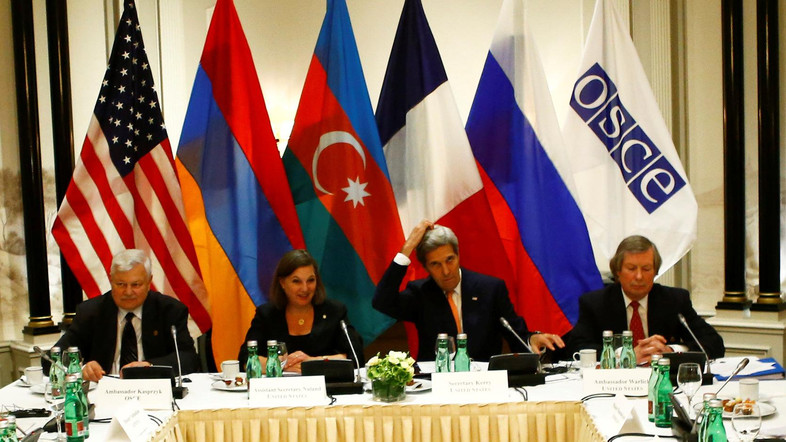 “QUIET DIPLOMACY” IN NAGORNO KARABAKH CONFLICT AND ARMENIAN ELECTIONS
“QUIET DIPLOMACY” IN NAGORNO KARABAKH CONFLICT AND ARMENIAN ELECTIONS
AVİM 24.04.2018 -
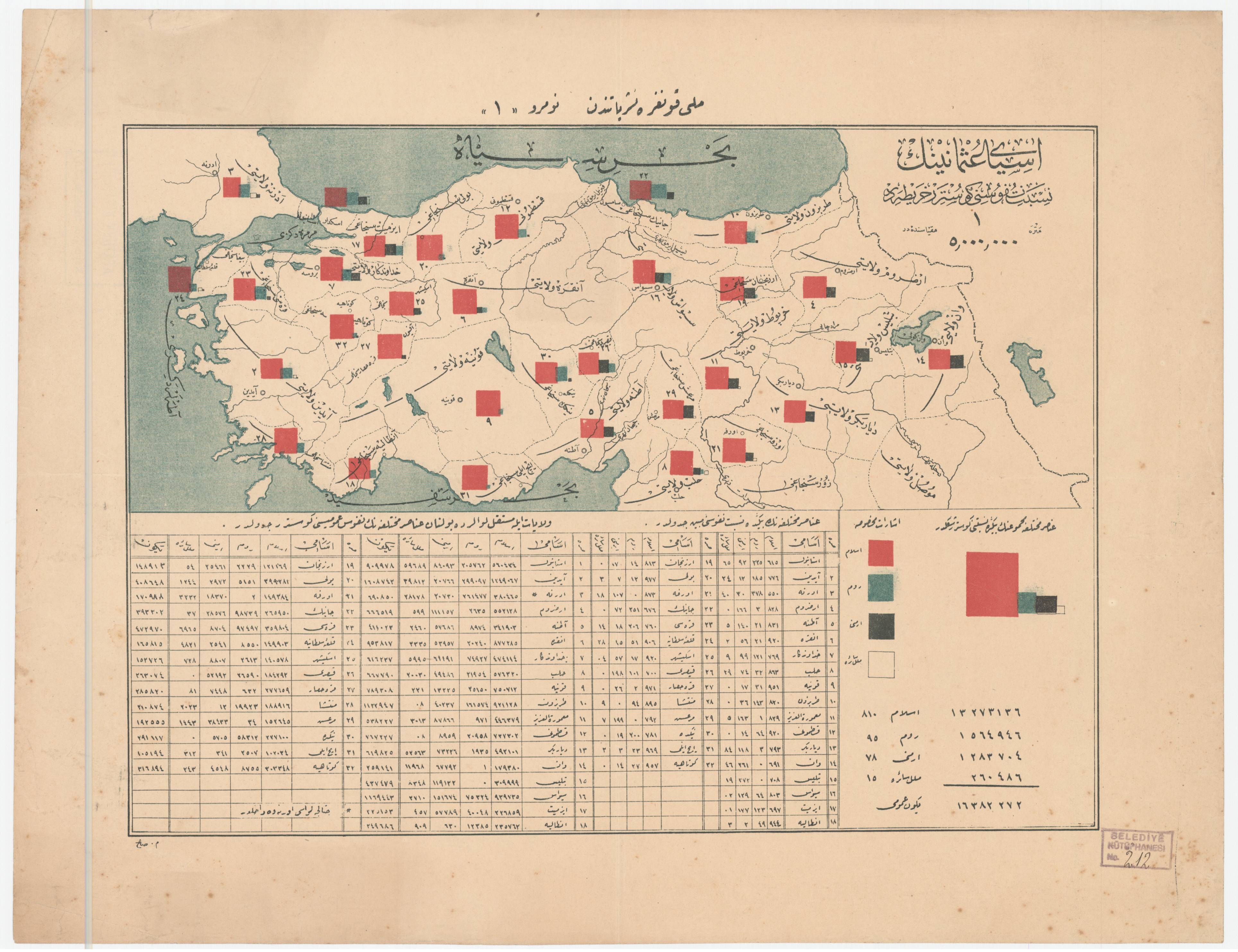 STATISTICAL INFORMATION REGARDING OTTOMAN ARMENIANS AND FOREIGN RESOURCES
STATISTICAL INFORMATION REGARDING OTTOMAN ARMENIANS AND FOREIGN RESOURCES
AVİM 25.10.2021 -
 THE ROOTS OF “NEMESIS” AND THE BACKGROUND OF RADICAL ARMENIAN NATIONALIST TERRORISM
THE ROOTS OF “NEMESIS” AND THE BACKGROUND OF RADICAL ARMENIAN NATIONALIST TERRORISM
AVİM 11.05.2023 -
 HOW DOES VON DER LEYEN'S DESCRIPTION OF “EUROPEAN WAY OF LIFE” COMPLY WITH EUROPEAN VALUES?
HOW DOES VON DER LEYEN'S DESCRIPTION OF “EUROPEAN WAY OF LIFE” COMPLY WITH EUROPEAN VALUES?
AVİM 30.09.2019
-
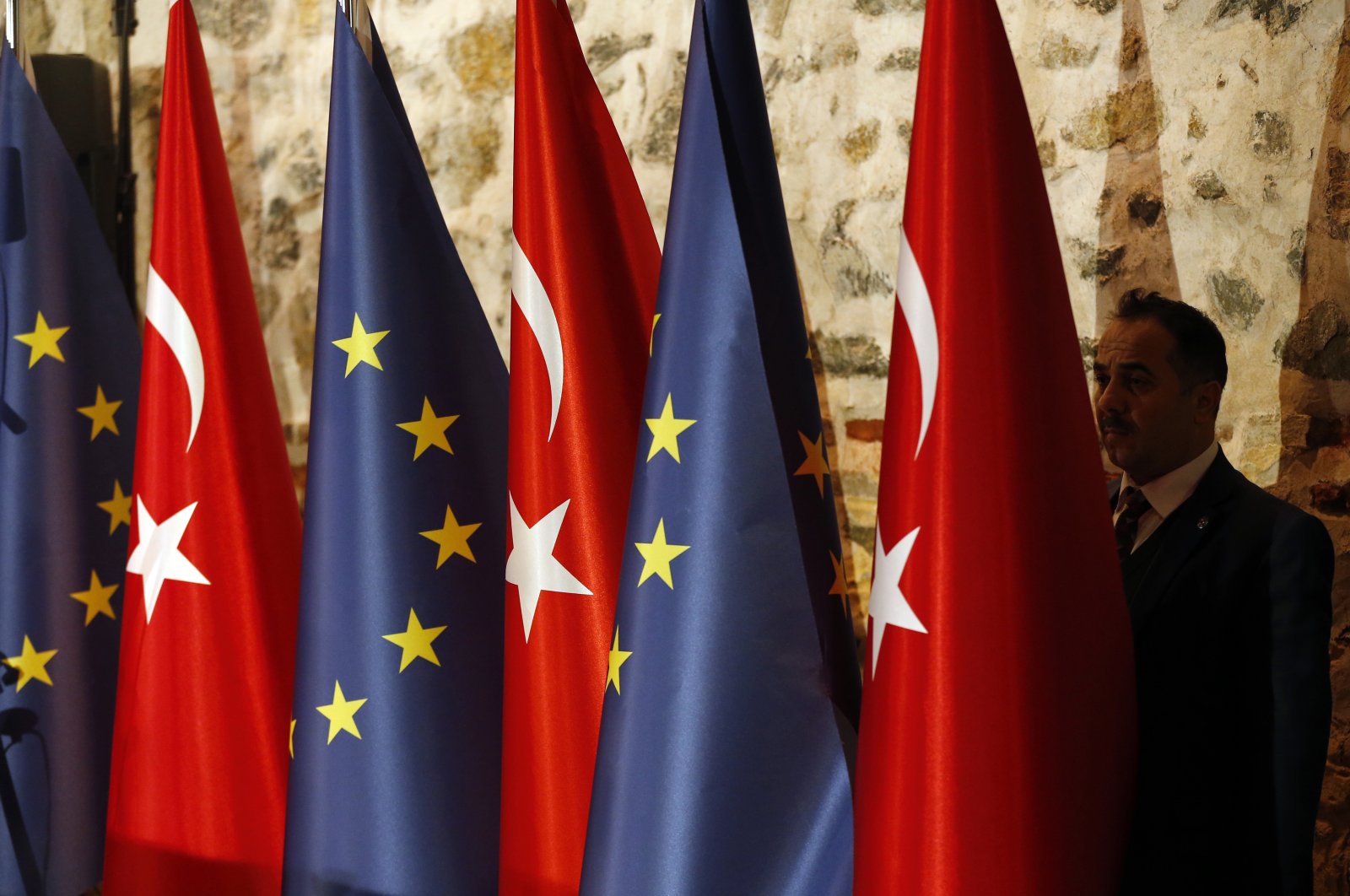 CHANGING PERCEPTIONS: THE EUROPEAN UNION INSTITUTE AND TÜRKİYE'S ROLE IN EU SECURITY POLICY
CHANGING PERCEPTIONS: THE EUROPEAN UNION INSTITUTE AND TÜRKİYE'S ROLE IN EU SECURITY POLICY
Teoman Ertuğrul TULUN 26.06.2024 -
 THE GRAIN INITIATIVE AND THE BLACK SEA SECURITY - I
THE GRAIN INITIATIVE AND THE BLACK SEA SECURITY - I
Turgut Kerem TUNCEL 03.08.2023 -
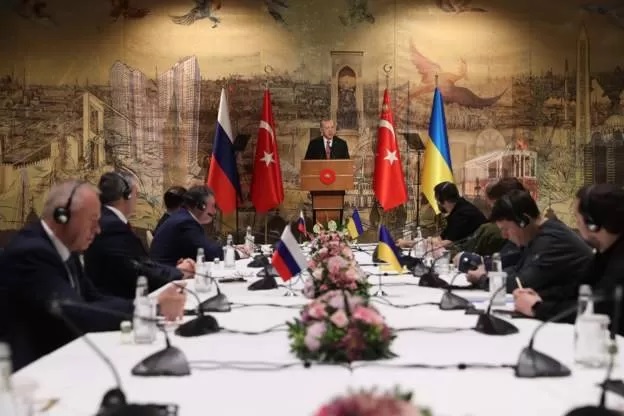 GEARS OF DIPLOMACY: TURKEY JOINING THE EQUATION
GEARS OF DIPLOMACY: TURKEY JOINING THE EQUATION
Gözde KILIÇ YAŞIN 16.05.2022 -
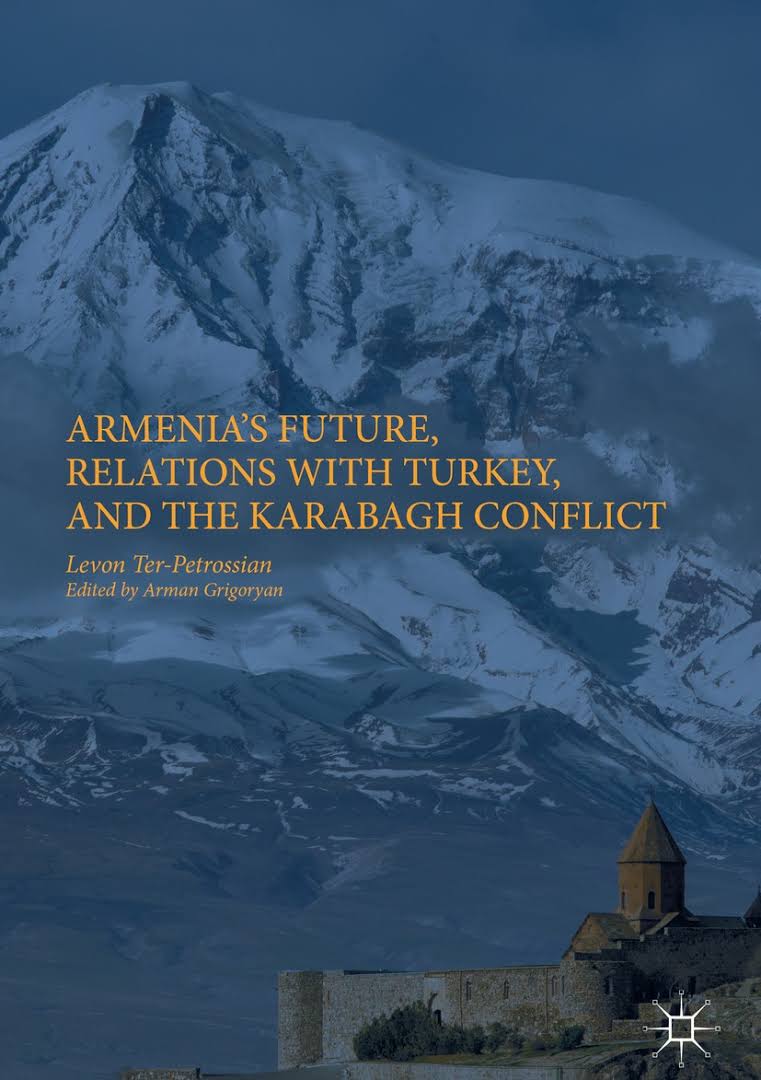 BOOK REVIEW: “ARMENIA’S FUTURE, RELATIONS WITH TURKEY, AND THE KARABAGH CONFLICT”
BOOK REVIEW: “ARMENIA’S FUTURE, RELATIONS WITH TURKEY, AND THE KARABAGH CONFLICT”
Gülperi GÜNGÖR 11.02.2020 -
 NİKOL PASHİNYAN’S SPEECH IN THE WORLD WAR I ARMISTICE EVENT REVEALS HIS INTENTIONS REGARDING 1915 EVENTS
NİKOL PASHİNYAN’S SPEECH IN THE WORLD WAR I ARMISTICE EVENT REVEALS HIS INTENTIONS REGARDING 1915 EVENTS
AVİM 19.12.2018
-
25.01.2016
THE ARMENIAN QUESTION - BASIC KNOWLEDGE AND DOCUMENTATION -
12.06.2024
THE TRUTH WILL OUT -
27.03.2023
RADİKAL ERMENİ UNSURLARCA GERÇEKLEŞTİRİLEN MEZALİMLER VE VANDALİZM -
17.03.2023
PATRIOTISM PERVERTED -
23.02.2023
MEN ARE LIKE THAT -
03.02.2023
BAKÜ-TİFLİS-CEYHAN BORU HATTININ YAŞANAN TARİHİ -
16.12.2022
INTERNATIONAL SCHOLARS ON THE EVENTS OF 1915 -
07.12.2022
FAKE PHOTOS AND THE ARMENIAN PROPAGANDA -
07.12.2022
ERMENİ PROPAGANDASI VE SAHTE RESİMLER -
01.01.2022
A Letter From Japan - Strategically Mum: The Silence of the Armenians -
01.01.2022
Japonya'dan Bir Mektup - Stratejik Suskunluk: Ermenilerin Sessizliği -
03.06.2020
Anastas Mikoyan: Confessions of an Armenian Bolshevik -
08.04.2020
Sovyet Sonrası Ukrayna’da Devlet, Toplum ve Siyaset - Değişen Dinamikler, Dönüşen Kimlikler -
12.06.2018
Ermeni Sorunuyla İlgili İngiliz Belgeleri (1912-1923) - British Documents on Armenian Question (1912-1923) -
02.12.2016
Turkish-Russian Academics: A Historical Study on the Caucasus -
01.07.2016
Gürcistan'daki Müslüman Topluluklar: Azınlık Hakları, Kimlik, Siyaset -
10.03.2016
Armenian Diaspora: Diaspora, State and the Imagination of the Republic of Armenia -
24.01.2016
ERMENİ SORUNU - TEMEL BİLGİ VE BELGELER (2. BASKI)
-
AVİM Conference Hall 24.01.2023
CONFERENCE TITLED “HUNGARY’S PERSPECTIVES ON THE TURKIC WORLD"









